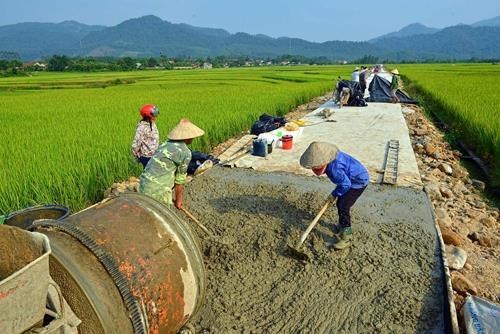Dien Bien accelerates new-style rural area building
The northern mountainous province of Dien Bien aims to have 35 communes complete from 15-19 criteria of the programme on building new rural areas by 2020.
 Transport system is upgraded thanks to new-style rural area building (Photo: VNA)
Transport system is upgraded thanks to new-style rural area building (Photo: VNA)Dien Bien (VNA) - The northern mountainous province of Dien Bien aims to have 35 communes complete from 15-19 criteria of the programme on building new rural areas by 2020.
Dien Bien city and Muong Lay town are hoped to qualify as district-level new-style rural areas while all communes in the province will meet at least five criteria of the programme in the period.
The province’s annual income per capita is expected to reach 18.9 million VND (831.6 USD) in 2020, and the poor rural household rate will fall 3-4 percent annually to 37 percent according to the 2016 – 2020 poverty standards.
Around 54.6 percent of the local workforce will receive training, and 76.99 percent of rural households will have access to hygiene water.
The province estimates that over 1.5 trillion VND (66 million USD) will be needed for the 35 communes to become new-style rural areas, or an average of 45 billion (1.98 million USD) for each commune.
In order to realise the targets, Dien Bien will increase guidance and help to the target communes, while improving the efficiency in capital use.
Currently, Dien Bien has only one commune among its 116 to have fulfilled all the criteria on new-style rural area in 2015.
The national target programme’s criteria cover infrastructure, production, living standards, income and culture, among others, aiming to boost rural regions in Vietnam. A district must have at least 75 percent of its communes meeting all the 19 criteria in order to receive the title of new rural district.
During the 2011-2015 period, more than 850 trillion VND (38.25 billion USD) was mobilised for the programme, of which only 11.6 percent came from the State budget. The programme is expected to need over 193 trillion VND (8.7 billion USD) in the next five years.
As of September this year, 2,045 communes, accounting for 23 percent, were recognised as new-style rural areas, along with 24 district-level localities. The figure is expected to hit 50 percent by 2020.-VNA













